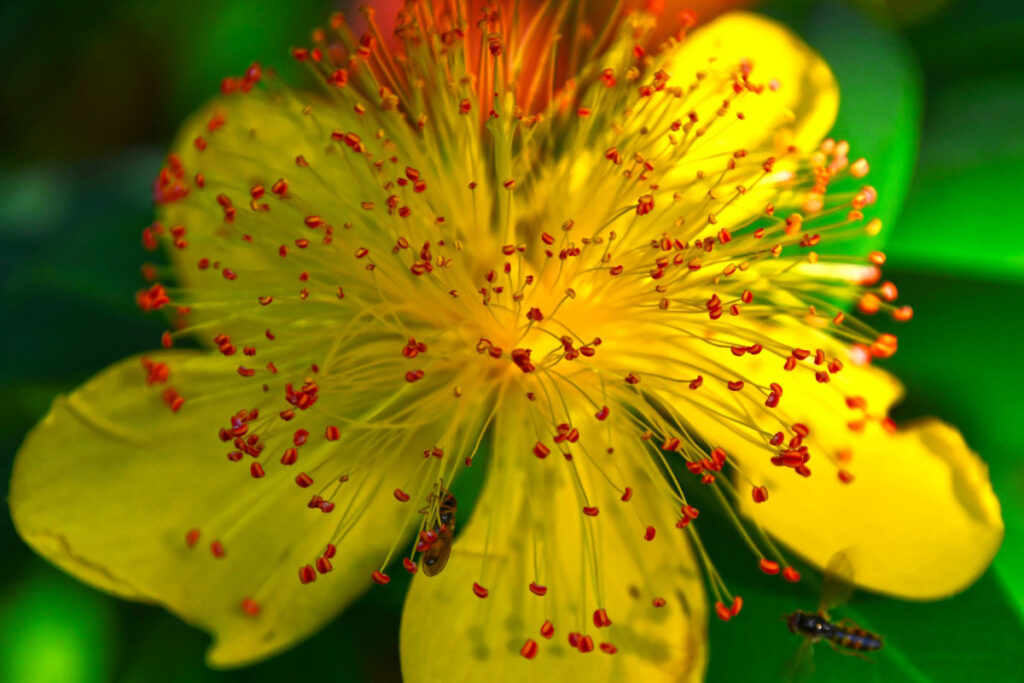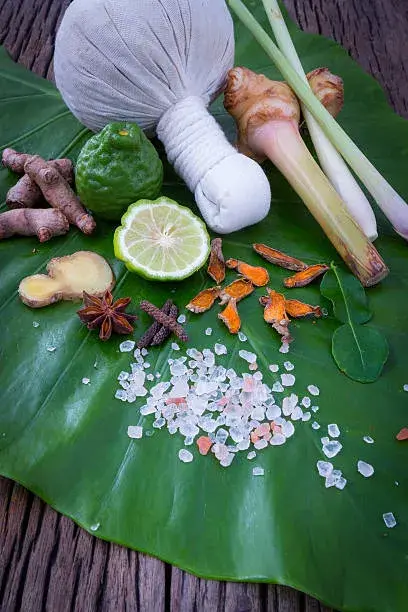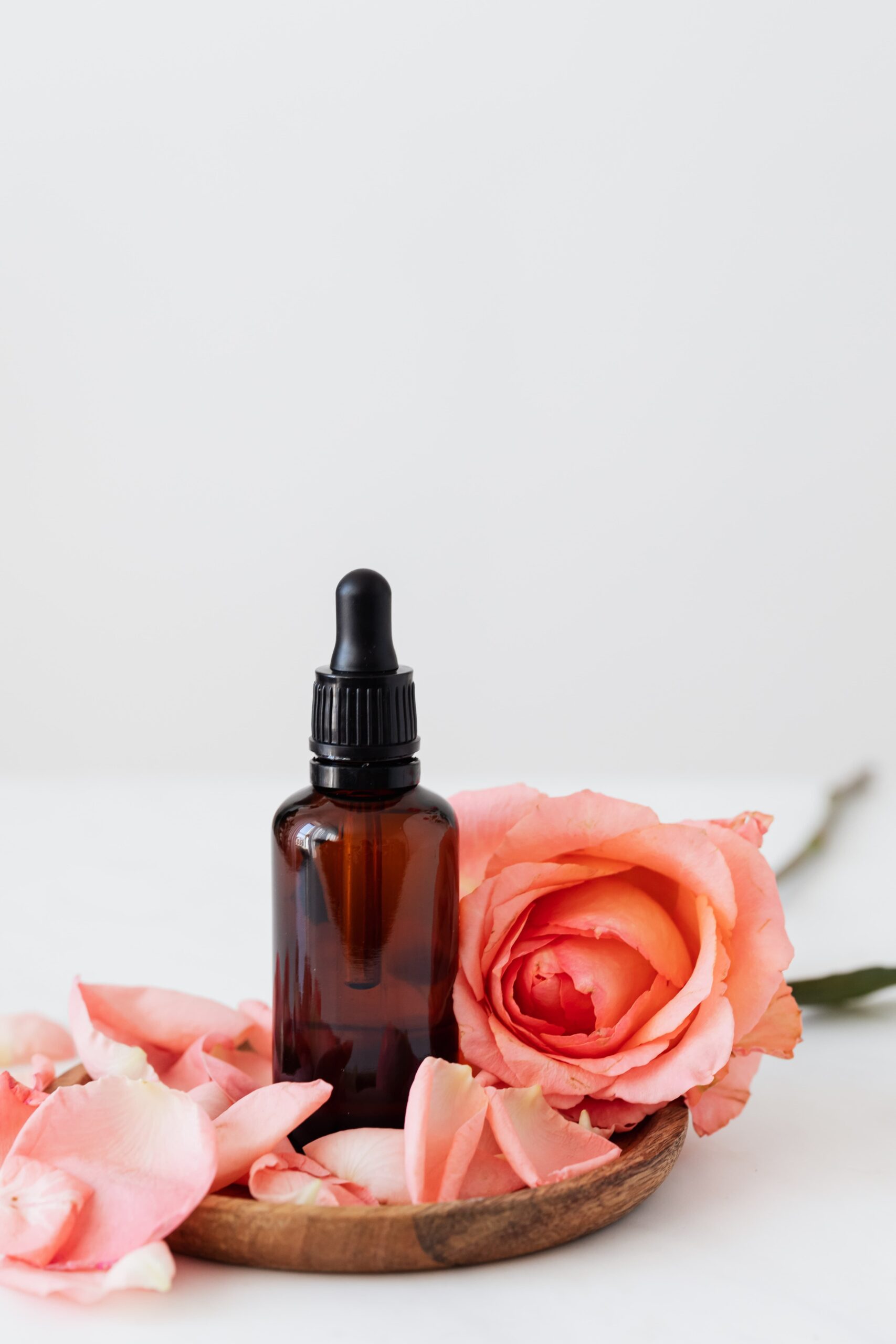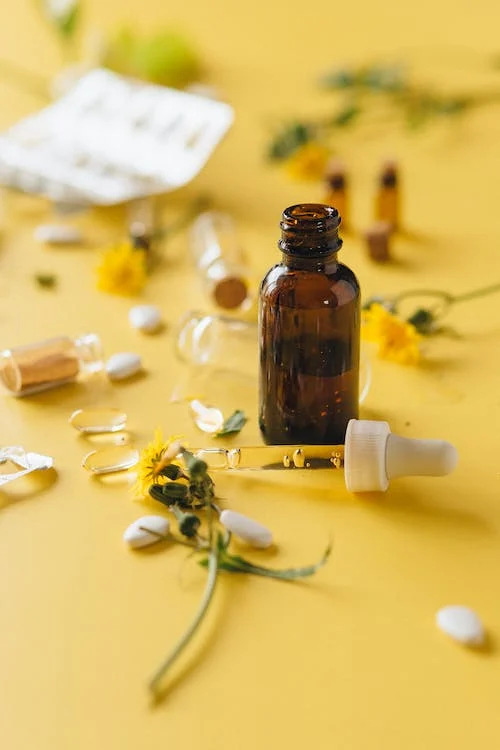St. John's Wort
Hypericum perforatum
Native to the United States and Europe, St. John’s wort is a perennial plant that grows beside country paths and on the sunny edges of woodlands. It owes its name to the fact that its golden- yellow flowers display their splendor around June 24- St. John’s Day. The medicinal benefits of the plant stem From a high concentration of hypericin, a red pigment that exudes from the flowers, and from pseuhohypericin. Hypericin is thought to be responsible for the known antidepressant effect of St. John’s wort. In addition, the plant has antibiotic and antiviral capabilities and has long been used to help heal wounds. The herb is currently being studied as a possible treatment for AIDS patients. It may also benefit the treatment of the herpes virus and mononucleosis.

Gardening Tips

Loves sunny, warm locations, but will grow in partial shade.

Likes well-drained soil, not too moist, with a high humus content

Reaches a height of il dependlq Water and nutrients.
In ancient times, the summer splendor around June 24— heal wounds. The herb is solstice was believed to be a magical day. St. John’s wort was used to ward off fears, benefits of the stem possible treatment for AIDS a high ghosts and nightmares; it patients. It may also benefit therefore also known as witches herbs.
ST. JOHN’S WORT
Hypericum perforatum
Characteristics:/1s small, bright-yellow flowers consist of five petals with long, feathery Stamens dt the center. The slender, oval leaves grow in opposite pairs. If held up to the light, the leaves appear to be perforated.
🙤 Care
Fertilize St. John’s wort with compost in the spring and feed it with organic fertilizer as necessary (an application in midsummer may help if the plant is growing in poor soil). St. John’s wort does not thrive in waterlogged soil, but does tolerate dryness well, making additional irrigation unnecessary. In the fall, cut back the stems to just above ground level.
🙤 Harvesting and processing
Though you can harvest from June to August, the fresh plant contains the highest active constituent contents at the end of June. For tea, gather the upper nonwoody parts and hang them in a dark place with the flower heads down. Use only the flowers to make herb oil.
🙤 Uses
The fresh flowers can be used to make an oil that has proved particularly curative for skin problems, bruises and rheumatic ailments.
Extra Tip
One way to identify St. John’s wort is to pinch the leaves or flowers, which will turn red due to the release of hypericin. This red pigment was said to represent the blood of St. John the Baptist.
An onion planted on St. John's night will grow and grow to a farmer’s delight
✽ Guide to Cultivation ✽
The ornamental and balcony varieties of Hypericum usually do not contain any healing properties. Only Hypericum perforatum, which is rarely found commercially, has this capability. For this reason, look for St. John’s wort in speciality or mail-order nurseries, or find a clump in the wild and gather just the seeds (a thimbleful of seeds will suffice). Never dig up native plants because it could harm the balance of the natural habitat.
✽ Seeding and planting ✽
- Between March and May, sow the St. John’s wort seeds thinly in a small box or a seeding tray filled with potting soil.
- Cover the seeds with a thin layer of soil. Mist them thoroughly with water and keep them moist. The seeds will germinate in approximately 14-20 days.
- After the seedlings have reached a height of approximately 1-2 in., transplant them in clusters of 3 into small pots filled with a growing medium. Place the potted plants in a sunny location during the summer and make sure that they receive sufficient water.
- In early fall, set the plants out in well-drained soil,about 12 in. apart. Cover the base of the plants with a light mulch after the They will bloom the next summer,
✽ Propagation ✽
The easiest way to propagate St. John’s wortis by dividing the plants in the spring or fall. Dig up your plants and divide the root tufts into several portions. Replant in well-worked, enriched soil. Collect some seeds from existing plants inthe fall and store themina =~ # dry, dark place during the winter to sow in March .
Extra Tip
One way to identify St. John’s wort is to pinch the leaves or flowers, which will turn red due to the release of hypericin. This red pigment was said to represent the blood of St. John the Baptist.













